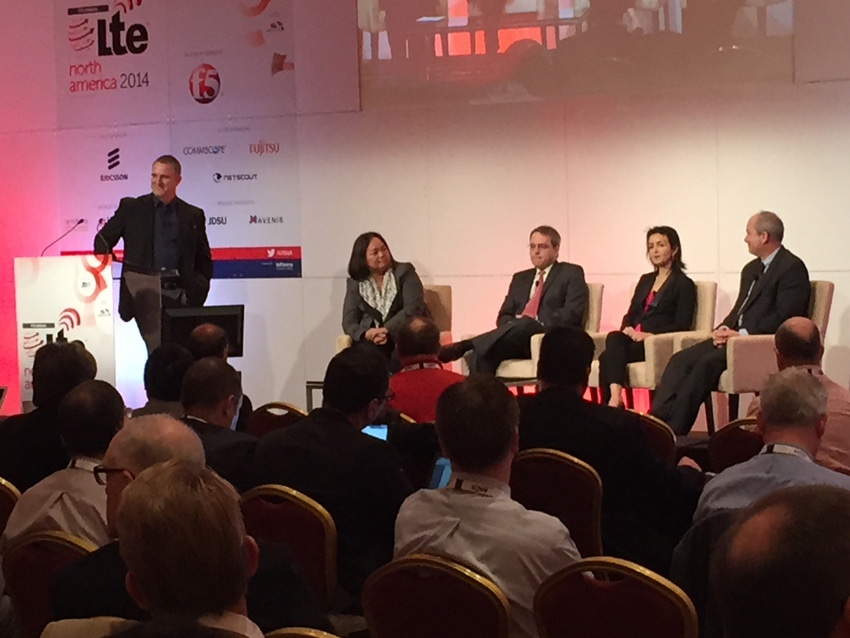T-Mobile USA, China Mobile and 4G Americas discussed the imperative nature of spectrum frequency selection and availability in the development of 5G at LTE North America in Dallas, Texas.
November 21, 2014

T-Mobile USA, China Mobile and 4G Americas discussed the imperative nature of spectrum frequency selection and availability in the development of 5G at LTE North America in Dallas, Texas.
During a discussion on 5G and the next generation of connectivity, talk quickly turned to the pivotal role of spectrum allocation. Both T-Mobile and China Mobile highlighted the need to maximise the potential of higher frequency spectrum bands.
As it stands, frequencies upwards of 20GHz have the potential to boost capacity and speeds for mobile users to an unprecedented level. In recent months, Samsung claimed speeds of up to 940MBps achieved on a 28GHz frequency. The challenge, however, lies in stabilising high frequencies which have short wavelengths.
Chih-Lin I, China Mobile’s Chief Scientist for Wireless Technology, stated that the operator is focussing on maximising the potential for multiple frequencies between the 6GHz and 20GHz bands.
“In China, our focus is on the 6GHz band. There is a 1km to 1.1km range on this, and there will be fragmented, discontiguous spectrum below 6GHz,” she said. “We all know that the higher we go, the tougher the mobility in coverage will become, so we’re looking ideally between 6GHz and 20GHz. We have a saying in China, and the nearest translation is ‘information at our fingertips, everything in touch’, that’s what we want to achieve with 5G.”
Meanwhile, Yasmin Kirimli, Director of Radio Network Technology Development at T-Mobile USA, praised the efforts being done by both the FCC and wider industry in developing a collaborative effort for identifying a spectrum allocation strategy.
“It’s very commendable to see the FCC is thinking ahead of time and looking at frequency allocations,” she said. “It would be good for us as an industry to put our thoughts together and put a proposal to the FCC about what frequencies we should be looking at. There are incumbents in the higher bands, and it may not be possible to find frequencies for world-wide uses for 5G, so we need to be working together”
Chris Pearson, the President of LTE association 4G Americas, suggested there are a number of areas which need to be considered and addressed before a common consensus on 5G can be agreed upon. He stated there are needs for efficiency gains across the board, an ability for 5G networks to accommodate the forecasted boom in internet of things and M2M connections, as well as, of course, capacity and speed upgrades.
“5G is not as straight forward as LTE,” he said. “It’s not just about speed and capacity, but it’s also about lower signalling requirements and longer battery life so that the IoT can grow as predicted. It’s not as straight forward as saying ‘this is what we need’, it’s also about looking at how we can build and improve on LTE-A, like developing MIMO further. There are a few things we really need to look at here. It will need to improve customer experience, have the capability to support and grow the internet of things. Finally it must deliver enhanced speed and capacity.”
About the Author(s)
You May Also Like








.png?width=300&auto=webp&quality=80&disable=upscale)


_1.jpg?width=300&auto=webp&quality=80&disable=upscale)


.png?width=800&auto=webp&quality=80&disable=upscale)